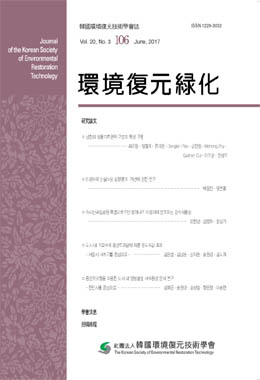With rapid urbanization and reckless urban development in the 21st century, the urban environment has gradually gotten worse, and urban heat island effect has been dramatically intensified. Thus, the importance of street greenery that can mitigate the urban heat island effect has further been highlighted. In this regard, this study was aimed at selecting suitable plant species for street greenery to reduce the urban heat island effect. Towards this end, five roads located in Seocho-gu, Seoul were selected as study sites, and plant species composition and difference of surface temperature were compared and analyzed in relation to the light transmittance. The street with the greatest temperature difference is Bangbae-ro(Platanus occidentalis). On the other hand, the road with the lowest temperature difference is Nambusunhwan-doro(Metasequoia Glyptostroboides). The effect of temperature reduction was found to be associated with light transmittance.Bangbae-ro(Platanus occidentalis) with the lowest light transmittance showed the highest temperature difference and Nambusunhwan-doro(Metasequoia Glyptostroboides) with the highest light transmittance showed the lowest temperature difference.
It is analyzed that there are most differences in temperature when the amount of lights coming in between the crown is small. The temperature reduction effect can be obtained by planting deciduous broad-leaved trees. Also species with dense crown and broad width of crown will be able to maximize the effect of temperature reduction. In future studies, it will be necessary to expand the other species of trees in the street, and analyze the germicidal trees and shrubs as well as the differences in the packaging materials




